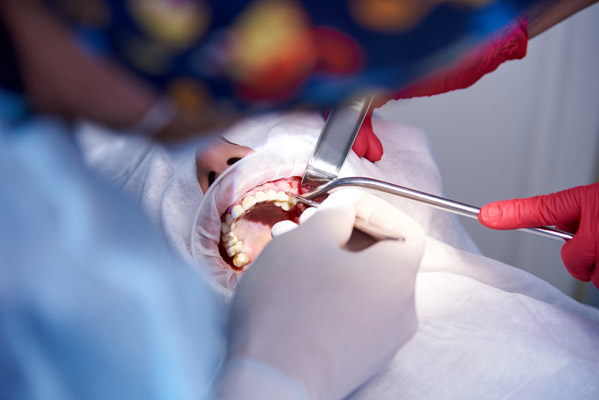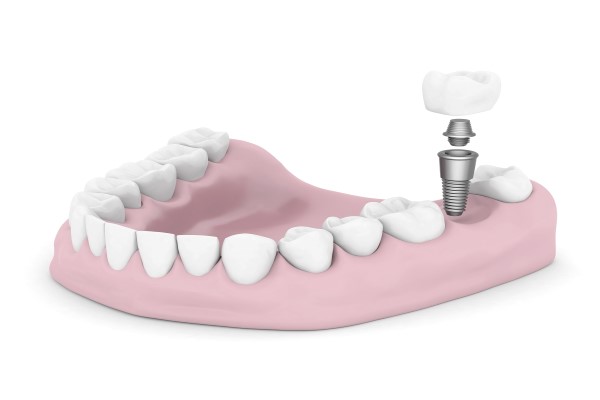Common Treatments for Periodontal Disease

Gum disease, which is also known as periodontal disease, is common, as it affects around 50% of individuals over the age of 30. The good news is that it is easily treatable in the early stages. However, if it remains untreated and advances, the outcomes are not good. In the progressive stages, treatment is more invasive to prevent the infection from spreading, to prevent jawbone loss, and to save the affected teeth.
Treatment options for early periodontal disease
Some people are in the very early stages of gum disease and do not even know it because there are no obvious symptoms. However, a periodontist can diagnose this issue during the exam. If there are very few signs, the patient may not need professional treatment. Rather, the periodontist will recommend improved oral hygiene habits to do at home.
As periodontal disease advances, there are some symptoms that the patient will notice. Some earlier signs include swollen and red gums, bleeding, heavy tartar buildup, and sensitive teeth. At this stage, the disease can be reversed. A periodontist will typically perform scaling and root planing, which is a deep cleaning that removes the buildup of tartar and plaque and prevents bacteria from adhering to the teeth.
Treatment options for late-stage gum disease
If someone ignores the early symptoms of periodontal disease, it enters the advanced stages, which is irreversible. Some signs and symptoms of advanced disease include:
- Recessed gums
- Chronic bad breath
- Exposed tooth roots
- Pus-filled lesions
- Pain in the gums
- Loose teeth
Pocket reduction surgery
If the gums have been recessed, there will be large pockets around the teeth. This can expose the roots, which results insensitivity. To treat this issue, the periodontist may perform a pocket reduction surgery, in which the gum tissue is folded back and the bacteria is removed.
Gum graft surgery
A gum graft may also be performed to replace the recessed tissues caused by periodontal disease. Tissue is taken from the soft palate or excess gum tissue elsewhere and is placed to cover up the tooth's root.
Abscess draining
If the bacteria infection has caused an abscess, the signs would be red, swollen, painful, and pussy lesions along the gumline. An abscess is serious, so the periodontist must drain the abscess, deep-clean the area to remove all infected parts, and possibly apply or prescribe an antibiotic.
Bone graft surgery
In the advanced stages of periodontal disease, the infection causes a loss of bone in the jaw. This causes the teeth to loosen and eventually fall out if the issue is not treated. Synthetic or natural bone can be placed in the area of loss so it can regenerate new bone.
Conclusion
Although it is common, periodontal disease is not something to ignore. It is reversible early on, but it can have devastating results if it is not treated.
Seeking treatment for periodontal disease is better in the early stages than in later, although there are treatment options for any stage. Contact our office to schedule a consultation with the periodontist as soon as possible.
Check out what others are saying about our dental services on Yelp: Periodontal Disease in San Diego, CA.
Recent Posts
People who are seeking healthy gums but are dealing with challenges with gingivitis can see an expert periodontist, a dental professional who has studied the structures that support the teeth. These include the gums, the jawbone itself, and the ligaments that help hold the teeth in place.Periodontists are trained dentists who focus their attention on…
Wondering what the difference is between a regular dental cleaning procedure and a scaling and root planing procedure? Keeping gum disease at bay is important for all dental patients. Periodontists are dental specialists who focus on preventing, diagnosing and treating gum disease.Thinking about your upcoming scaling and root planing procedure? Periodontists are dental specialists who…
Pinhole gum surgery is a painless, non-invasive way of reversing gum recession. It is a far better alternative than the traditional option: Gum graft surgery. While gum surgery often requires multiple sessions in the dentist’s chair, pinhole periodontal surgery only needs one. There are many other reasons to choose pinhole surgery over a gum graft.…
A socket preservation graft can help speed the healing process after a tooth extraction. However, it is important to take some steps to help aid the healing process. Keeping the area clean will help you avoid an infection. You will also want to limit your diet in the first several days. It is a good…


